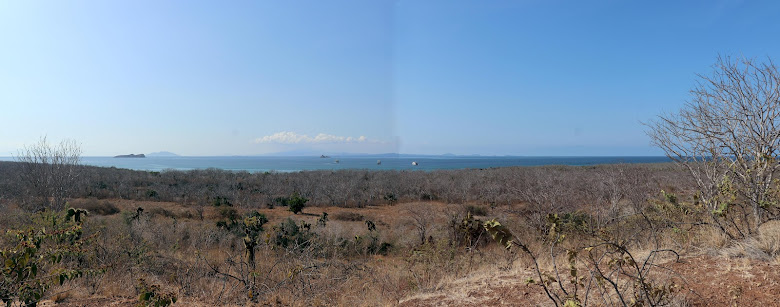That morning there were rose-ringed parakeets calling in the trees around the hotel.
We headed out, across the island, to a grassy region (magenta dot) in the south-center with some wetlands.
There there were lots more Rose-ringed parakeets, a troupe of Mona monkeys, and grassland and wetland birds (Scaly-naped Pigeons, Eurasian Collared-Doves, a Common Ground Dove, Zenaida Doves, Green-throated Caribs, Common Gallinules, American Coots (White-shielded), Green Herons, Western Cattle Egrets, a Great Blue Heron, Caribbean Elaenia, Gray Kingbird, Shiny Cowbirds, Carib Grackles, Banaquits, Bullfinches, and Black-faced grassquits.
Soras are nothing special, but I'd never seen one before, and there was one in the pond.
(Don't believe me? I don't care!)
Further down the road was a Grassland Yellow-finch.
We continued to the oldest church in Barbados, St John Parish Church, 1645.
Then to Bayfield Pond, where we saw Rock Pigeons, Zenaida Doves, Common Gallinules, a Spotted Sandpiper, Solitary Sandpipers, Lesser Yellowlegs, Bananaquits and a Barbados Bullfinch.
I was grumpy (starving) and because of the completely unforseeable presence of school buses on Barbados roads at 9 a.m., almost missed breakfast back at the hotel. Oh yes, and we had to go see some green turtles on the way back. I can look out my window in Melbourne Beach, and see green turtles mating, so I wasn't impressed.
I shouldn't get hangry; on the other hand, people shouldn't try to starve me.
The rest of the party having left, Marjorie and I walked over to the
Barbados Museum & Historical Society, an airy and impressive museam at the top of the big racecourse, on the site of an old British military prison. Pretty, historically informative, and relaxing. It was, of course, hot out, but we stayed on tree-lined sidestreets.










No comments:
Post a Comment